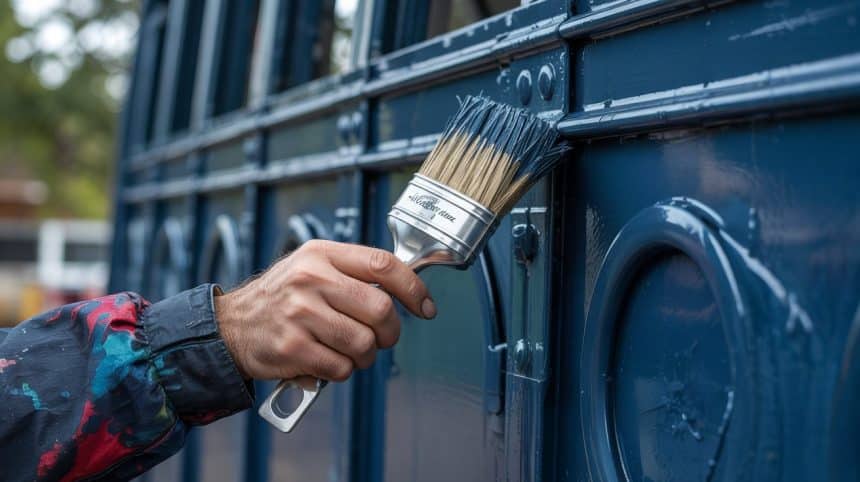Are you considering painting metal but unsure where to begin? Getting the right paint for metal surfaces, from rusty railings to indoor décor, can save you time, money, and frustration.
With numerous options available—such as spray paints, enamels, and primers—it’s easy to feel overwhelmed.
The good news? This guide explains everything in detail. We’ll cover why metal needs paint, how to pick the best type for your project, and the step-by-step process for getting lasting, professional-looking results.
Why Paint Metal Surfaces?
Metal items need paint for three main reasons, and painting them can save you time and money in the long run.
Protectionis the top reason to paint metal. When you apply the right paint, it forms a strong barrier that keeps water, air, and other elements from contacting the metal. This stops rust and corrosion from forming. Think of paint as a raincoat for your metal – it keeps the bad stuff out.
Looksmatter too. Fresh paint can turn dull, worn items into ones that catch the eye. A new coat of paint brings life back to old gates, furniture, or fixtures. The right color can match your style or make a bold statement in your space.
Lifespanpaint gives metal a big boost. Metal that remains protected can last significantly longer than bare metal. This means you won’t need to repair or replace items as often. A few hours of painting now can add years to the life of your metal items.
Types of Metal Surfaces
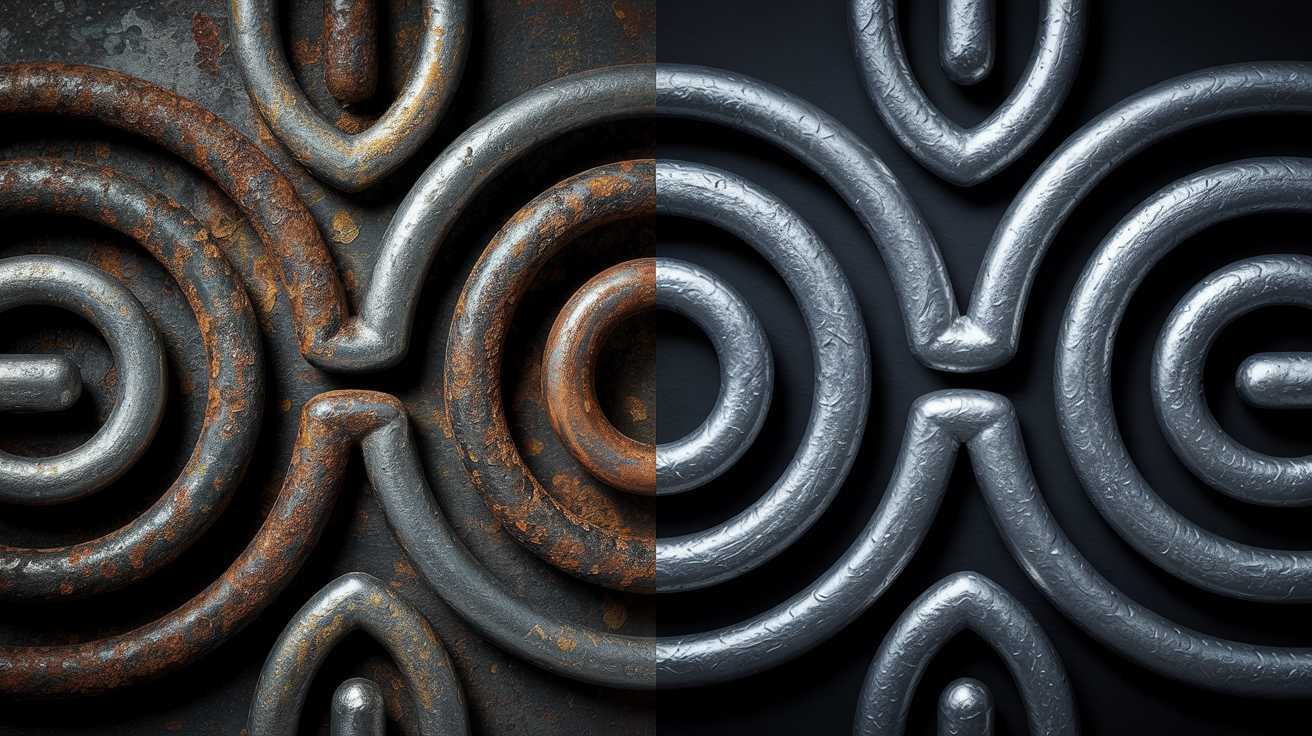
Metals differ greatly. These differences affect which paint works best for your needs. Knowing your metal type helps you make the right paint choice.
Ferrous Metals
Ferrous metals have iron in them. Steel, iron, and cast iron fall into this group. These metals rust when they meet air and water. They need extra care.
For outdoor steel chairs or iron gates, look for paints that stop rust. These metals often need primer before paint. The primer helps the paint stick better.
A steel fence left outside will rust without the right paint. Cast iron grills last longer with proper primers and topcoats. Iron railings stay nice looking when treated correctly.
Non-Ferrous Metals
Non-ferrous metals lack iron. Aluminum, copper, brass, and zinc-coated metal fit this class. These metals fight rust well on their own.
Their main issue is that paint struggles to stick to them. Aluminum siding needs special primers for good paint bonding. Copper light fixtures also need specific prep work.
Zinc-coated metal (also called galvanized metal) gives painters real trouble. It needs very careful prep steps before painting begins.
Brass door handles may look good unpainted, but if you want color, use the right primer. Aluminum window frames hold paint better with proper base coats.
Pick your paint based on your metal type. The right match means your painted metal will look good much longer.
Key Features to Look for in Metal Paint
When choosing paint for metal, some features matter more than others. The right paint helps your metal items last longer and look better. Here’s what to check for:
- Rust Protection Good metal paint stops rust before it starts. Look for products that say “rust-inhibiting” on the label. These paints form a shield that keeps water and air away from the metal. For outdoor items like gates or railings, this feature is a must-have.
- Adhesion Strength Paint must stick well to metal. Poor sticking leads to chips and flakes. Many metal paints now come with better grip power. Some even stick to slightly rusty surfaces, saving you prep time.
- Finish Options Metal paints come in many finish types. Glossy finishes shine bright and clean up well. Flat finishes hide small flaws in the metal. Satin and semi-gloss options offer a middle ground. Pick based on how the item will be used and seen.
- Durability Tough paint lasts longer. Check how well the paint stands up to scratches, hits, and weather. Quality paints might cost more but need fewer touch-ups over time.
- Drying Time Some paints dry in an hour, while others take days. Fast-drying options help when you need to use the item soon. Slower drying paints often create a smoother finish. Think about your time frame when choosing.
- Weather Resistance For outdoor metal, pick paint that handles sun, rain, and temp changes. UV-fighting paints keep colors from fading in sunshine. This matters most for items that stay outside all year.
- VOC Levels VOCs are chemicals that go into the air as paint dries. Lower VOC paints smell less and are safer to use. Many new metal paints have low VOC counts while still working well.
- Base Type Oil-based paints stick well to metal but take longer to dry. Water-based paints clean up with soap and water. Each type has good points. Oil often works better for outdoor metal that faces tough weather.
Picking the right metal paint saves time and money in the long run. A good choice means less fixing and more enjoying your metal items
Best Types of Paint for Metal
1. Oil-Based Paint
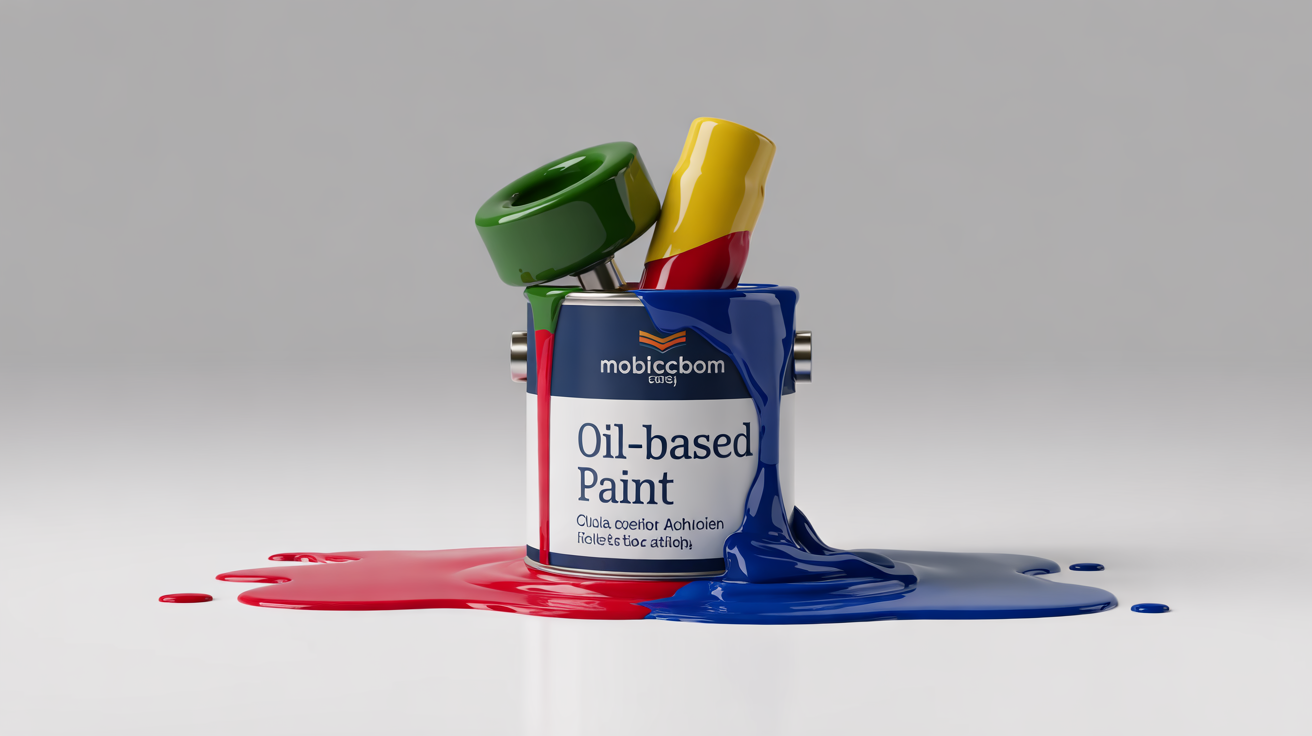
Pros:
- Stays strong for years
- Fights rust well
- Smooth finish
Cons:
- Takes time to dry
- Needs mineral spirits for cleanup
- Stronger smell
Best for: Outdoor furniture, gates, fences
2. Acrylic Paint
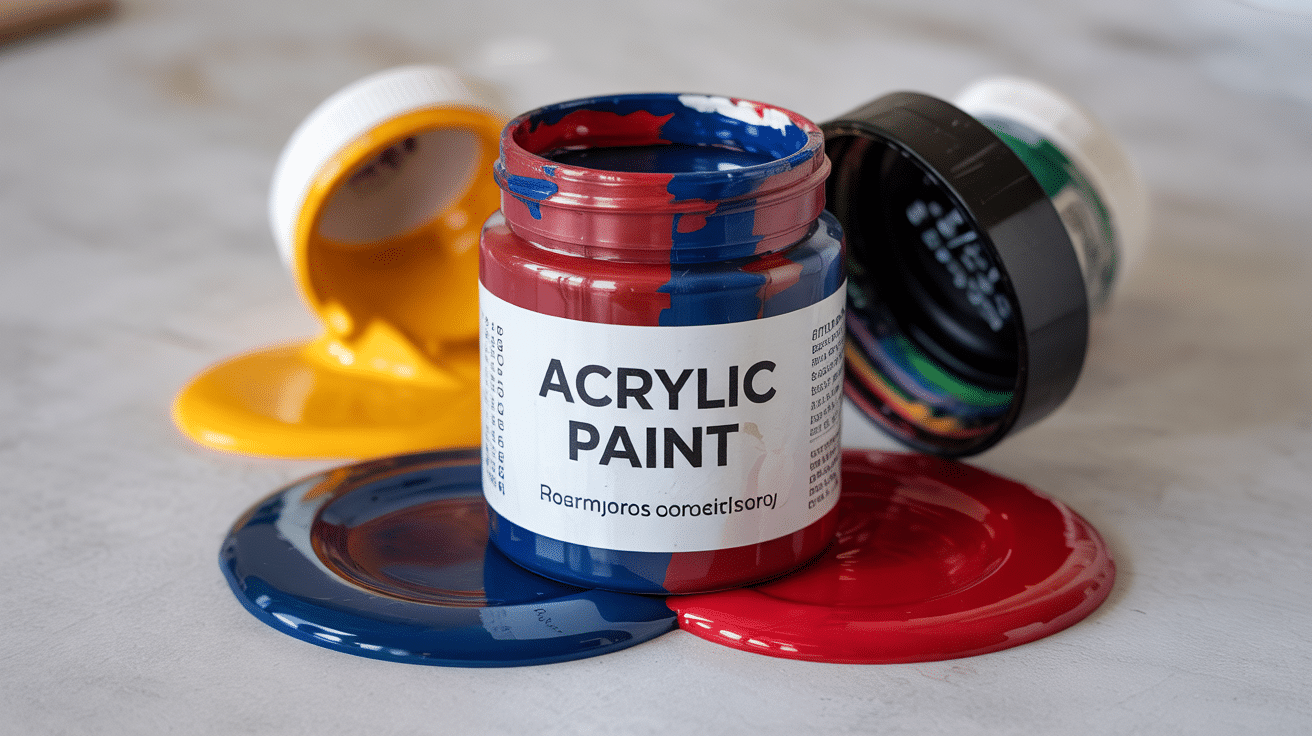
Pros:
- Dries fast
- Easy to clean up with water
- Less smell
Cons:
- Not as tough as oil-based
- May need special primer
Best for: Indoor metal items, quick touch-ups
3. Epoxy Paint
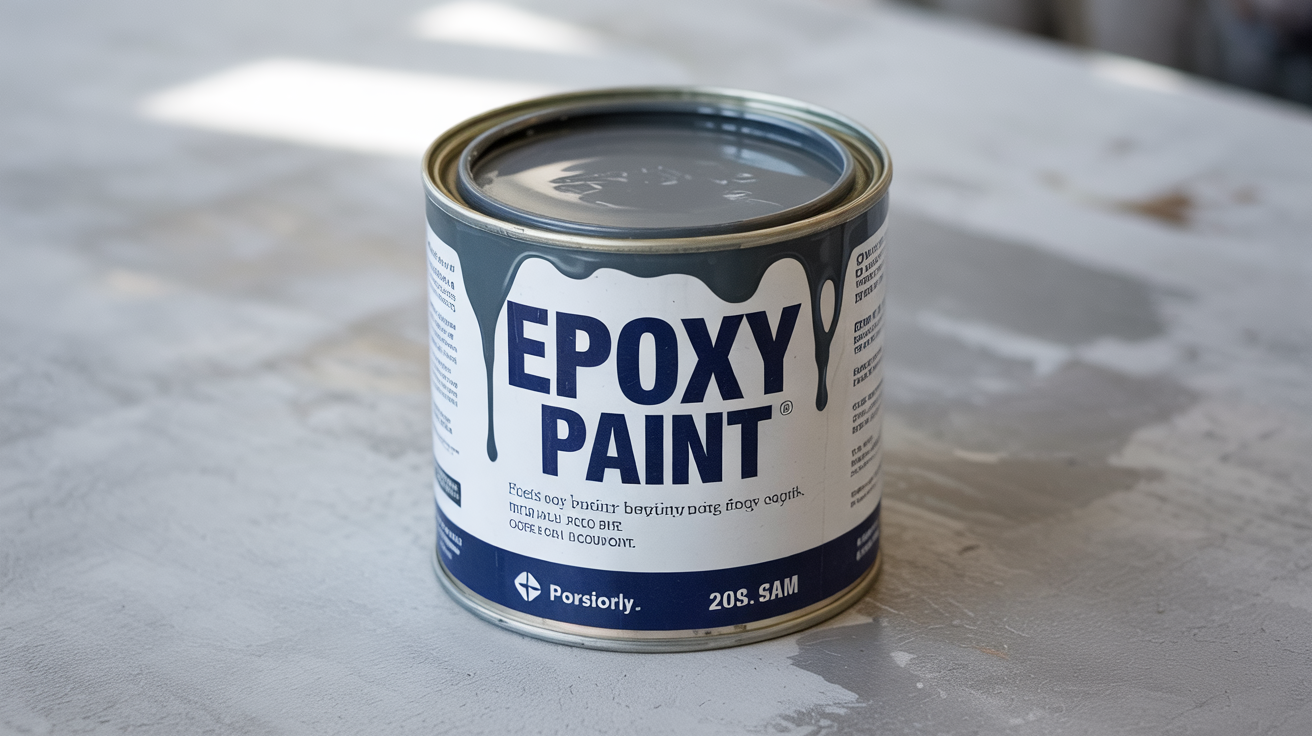
Pros:
- Very hard finish
- Withstands chemicals and impacts
- Lasts for years
Cons:
- Harder to apply
- Often comes as two parts, you mix
- Short working time once mixed
Best for: Cars, appliances, industrial items
4. Enamel Paint
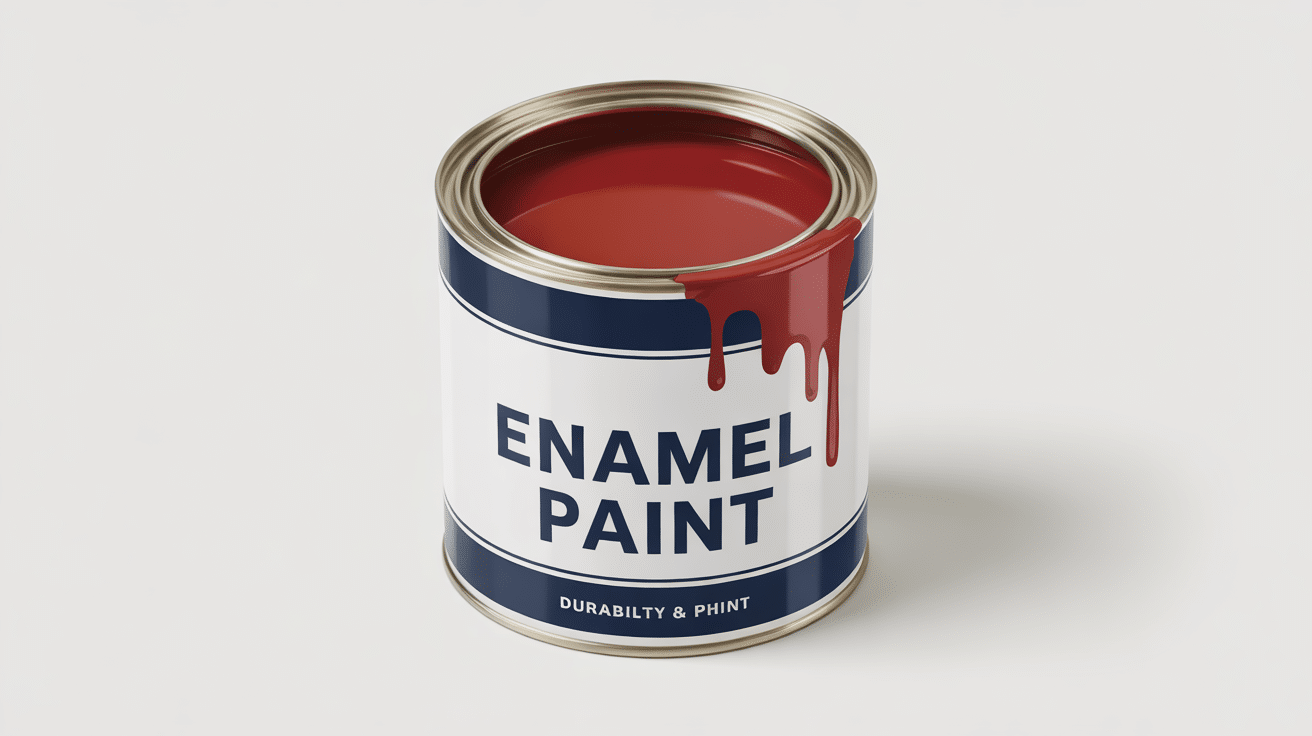
Pros:
- Makes a hard, smooth finish
- Often comes in both oil and water-based forms
- Good color options
Cons:
- Can yellow over time (some types)
- May chip with hard impacts
Best for: Metal furniture, decor items, cabinet hardware
5. Spray Paints
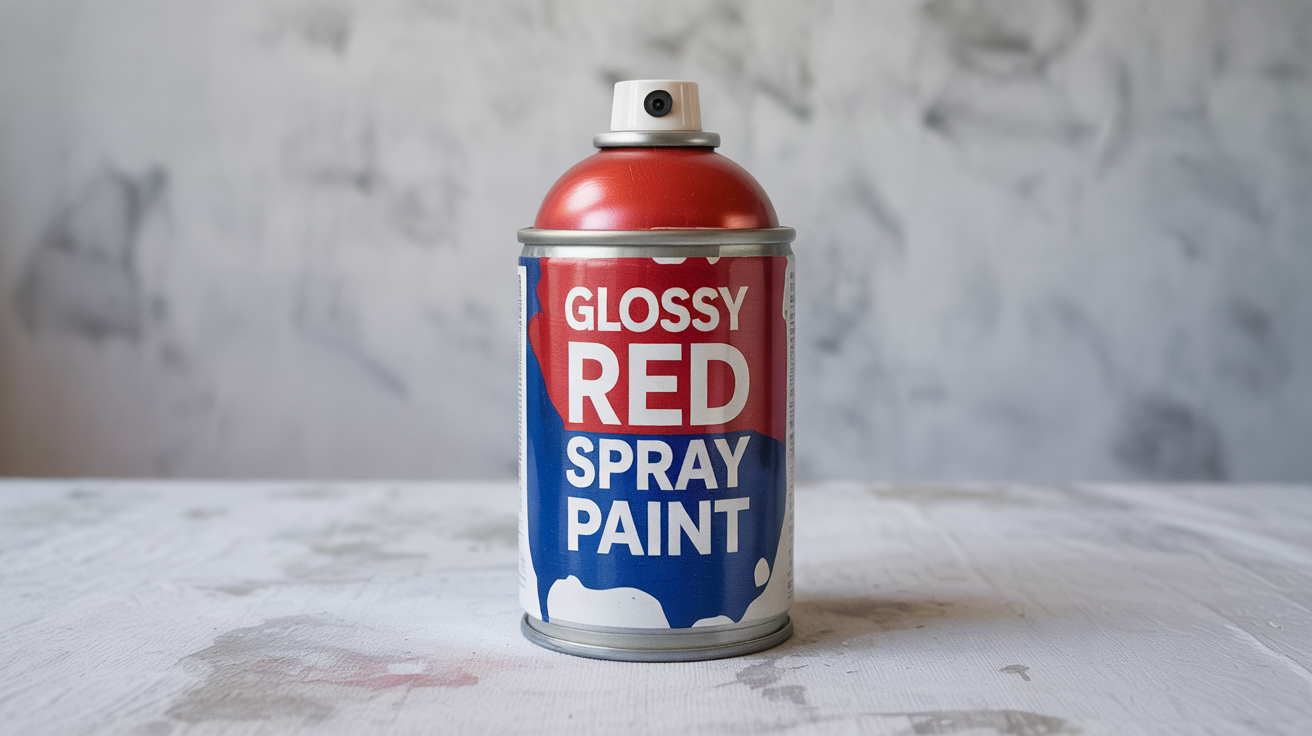
Pros:
- Easy to apply
- No brush marks
- Reaches tight spots
Cons:
- Can be wasteful
- Needs good air flow
- Multiple thin coats are needed
Best for: Small items, complex shapes, touch-ups
Top-Rated Paint Brands for Metal
1. Rust-Oleum
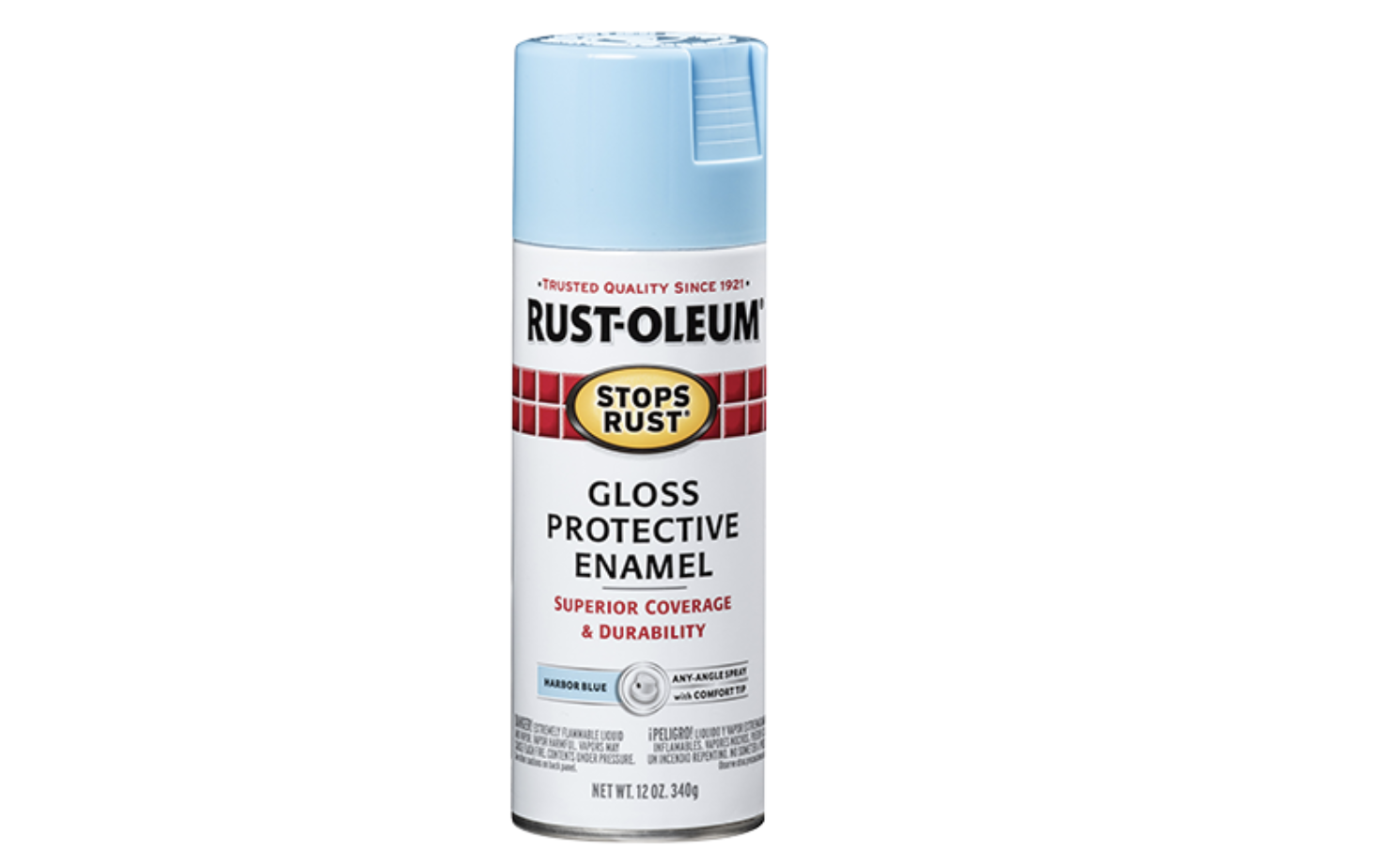
Known for: Rust-stopping power and a wide range of products.
Best product: Stops Rust Protective Enamel
2. Krylon
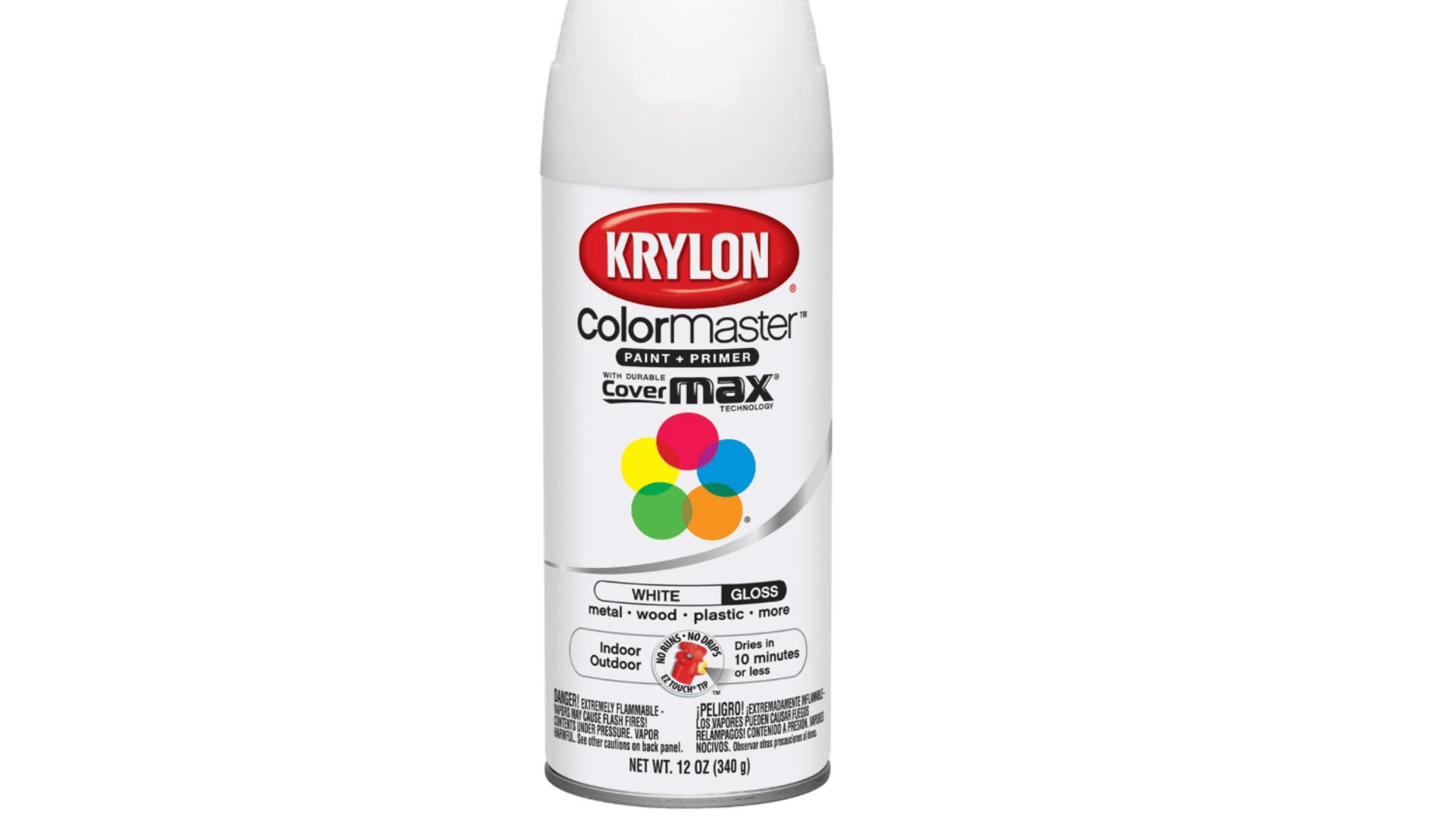
Known for: Fast-dry spray paints and good color range.
Best product: ColorMaster Paint and Primer
3. Hammerite
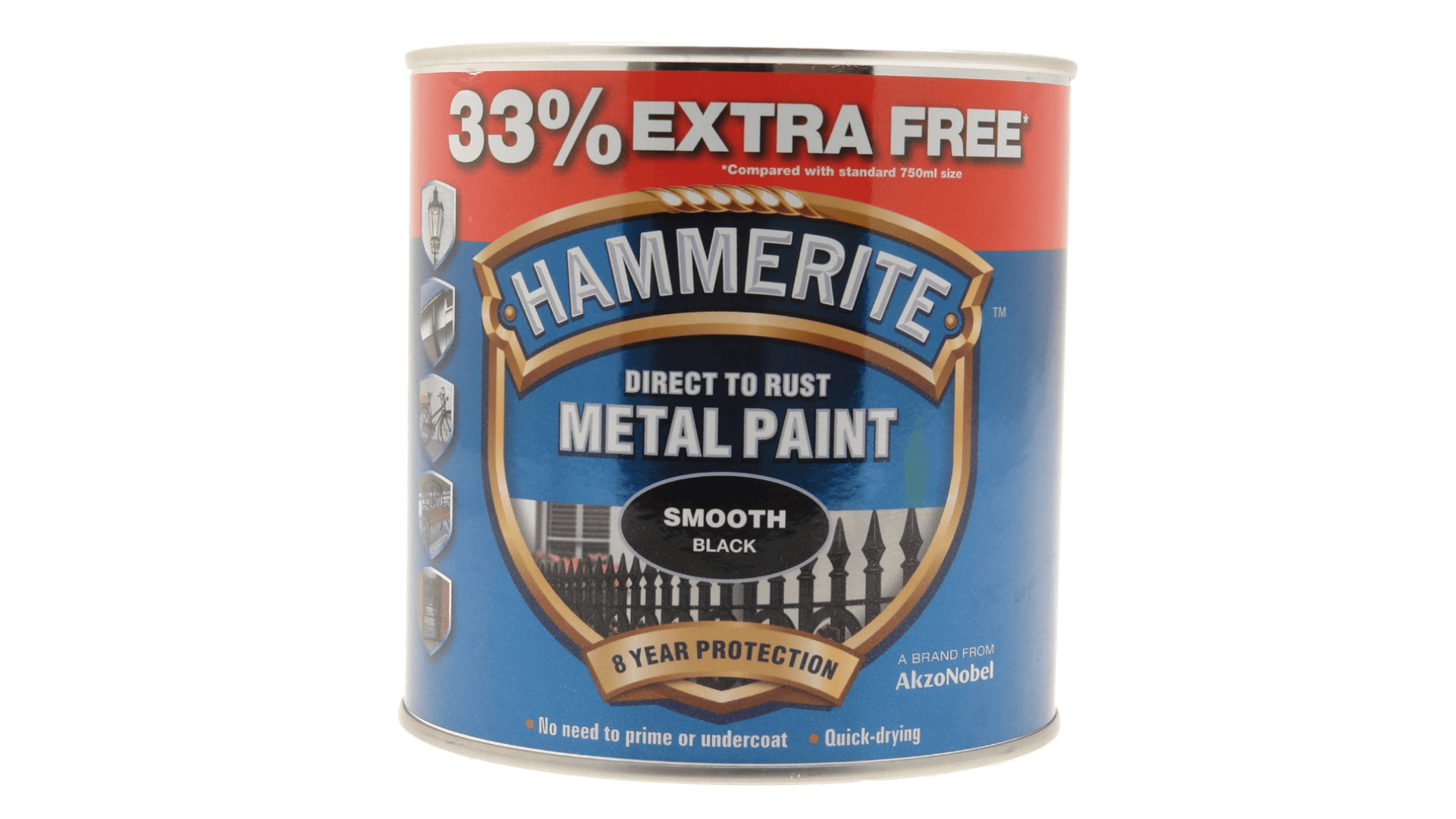
Known for: Direct-to-rust application and textured finishes.
Best product: Smooth Finish
4. POR-15
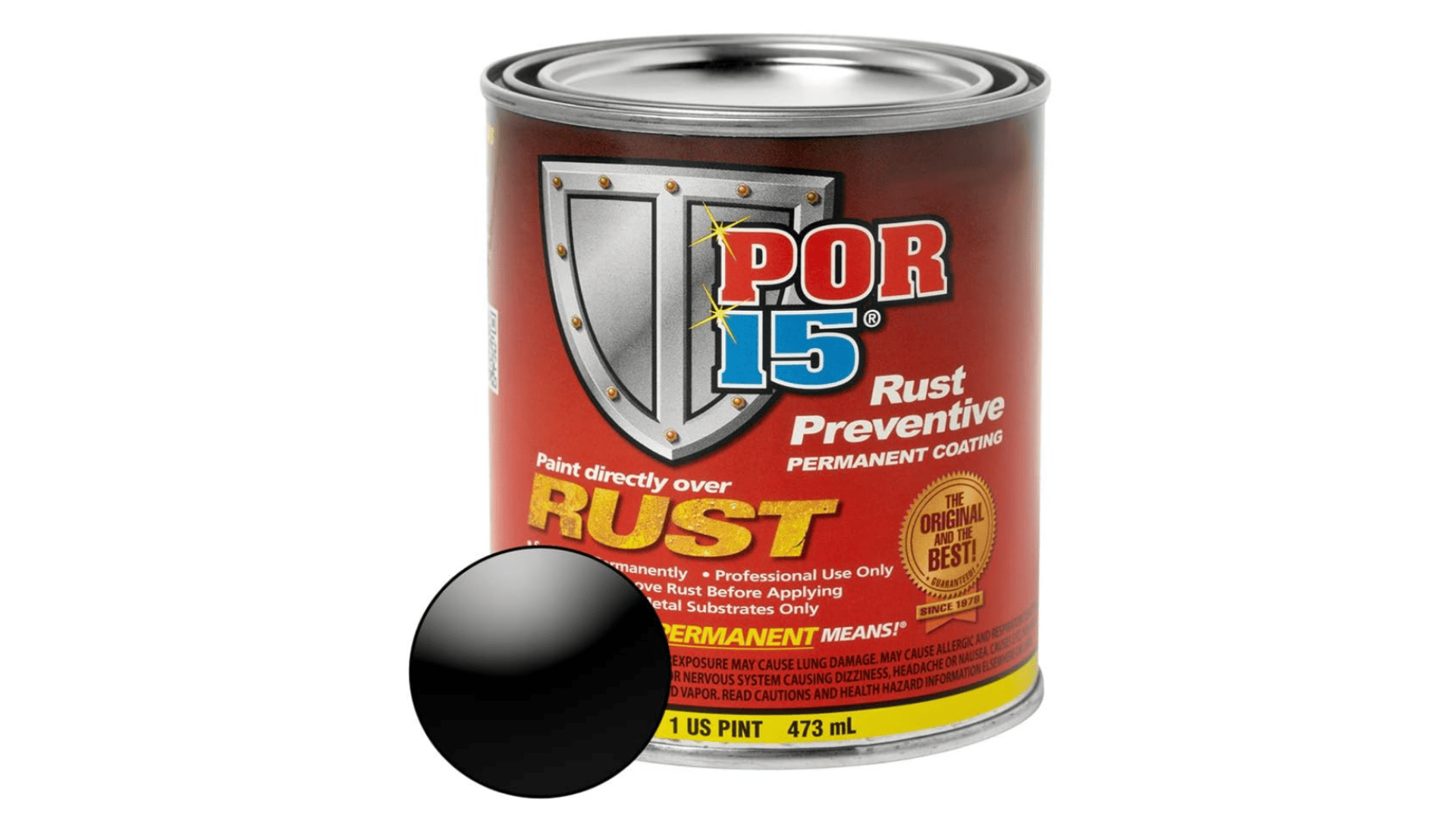
Known for: Pro-grade rust treatment and prevention.
Best product: Rust Preventive Coating
5. VHT
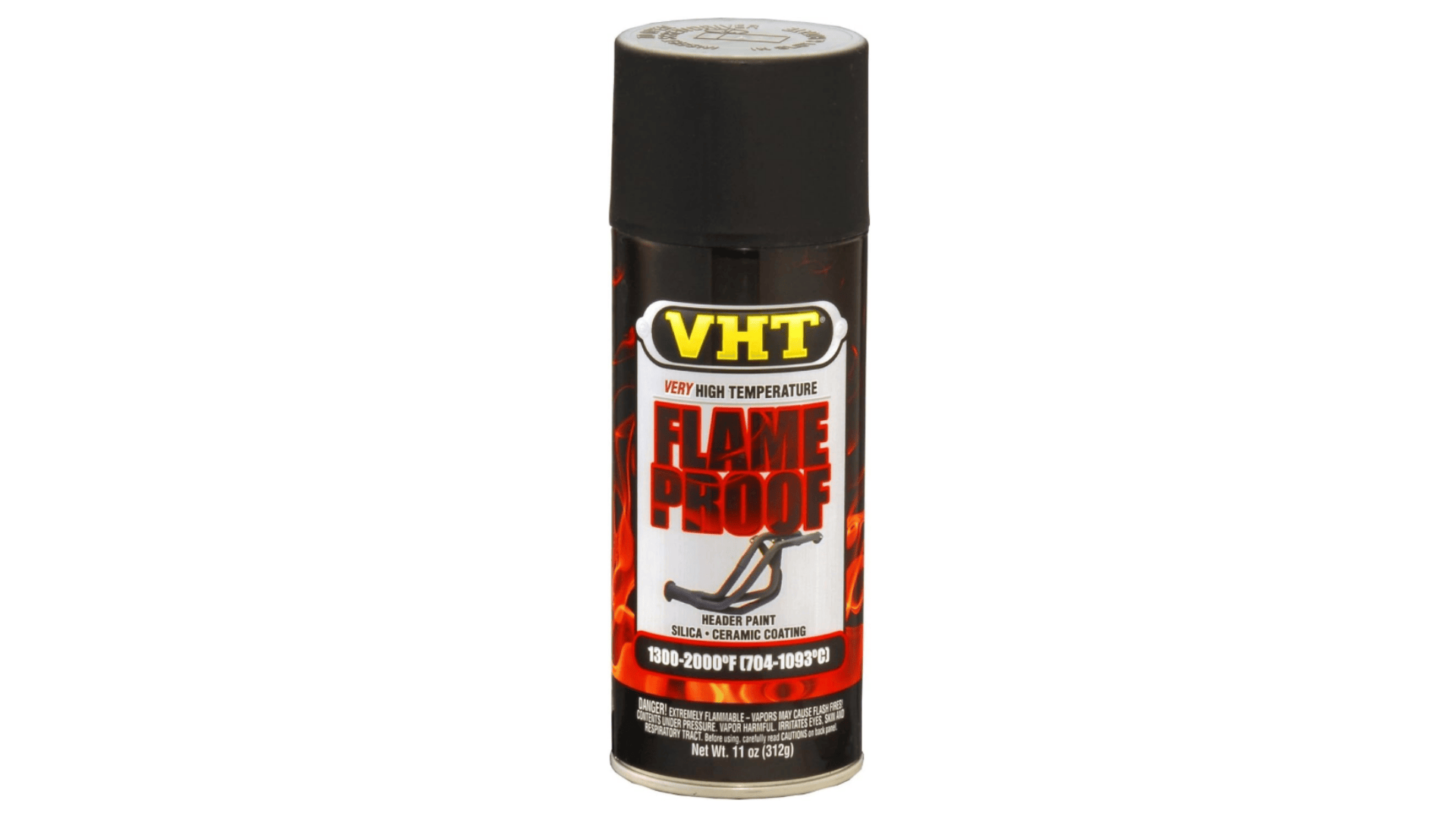
Known for: High-heat paints (up to 2000°F)
Best product: Flameproof Coating
Step-by-Step: How to Paint Metal Properly
Following the right steps when painting metal makes all the difference between a finish that lasts for years and one that fails quickly. Here’s a detailed guide to help you get professional results:
1. Clean the Surface
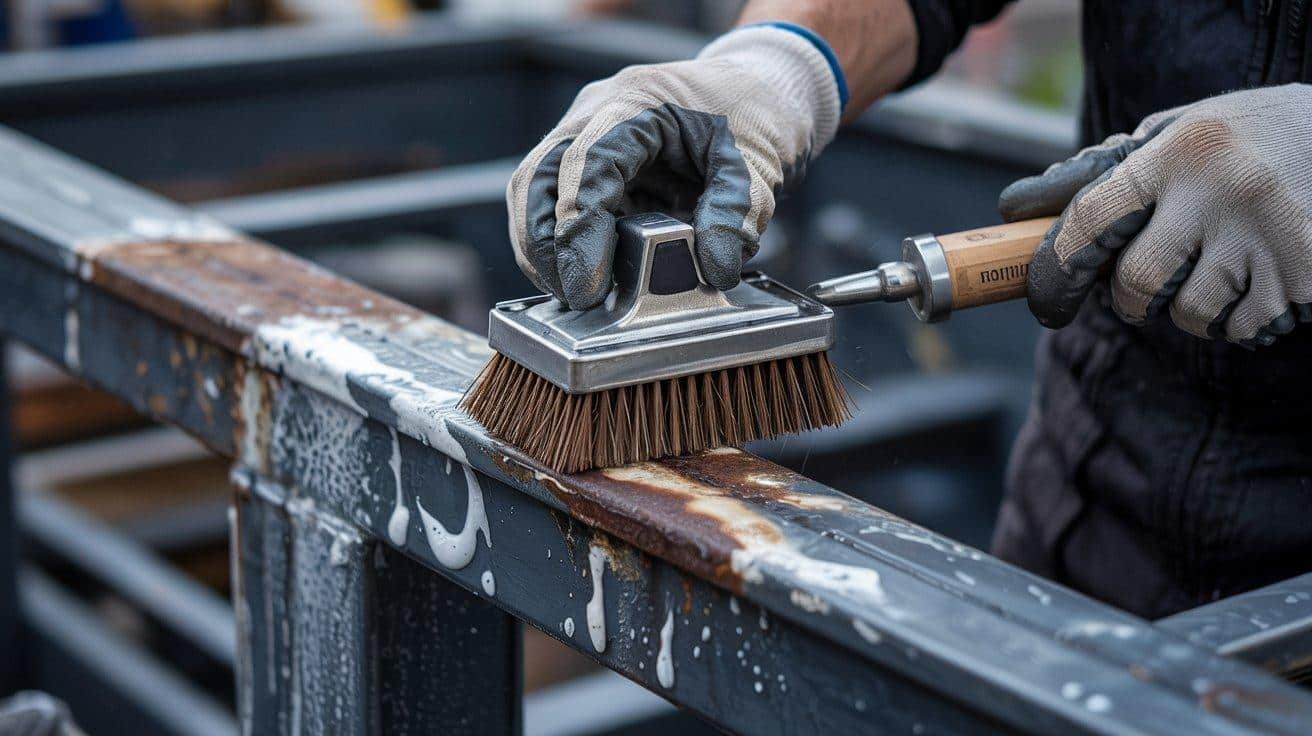
Start with a clean slate. Use a wire brush or coarse sandpaper to remove any visible rust spots. Rust left under paint will continue to spread. Next, wash the entire surface with soap and water or a degreaser to remove dirt, dust, and grease.
Oil from fingers can stop paint from sticking. Allow the metal to dry completely before proceeding to the next step. Any moisture trapped under paint will cause problems later.
2. Sand or Scuff
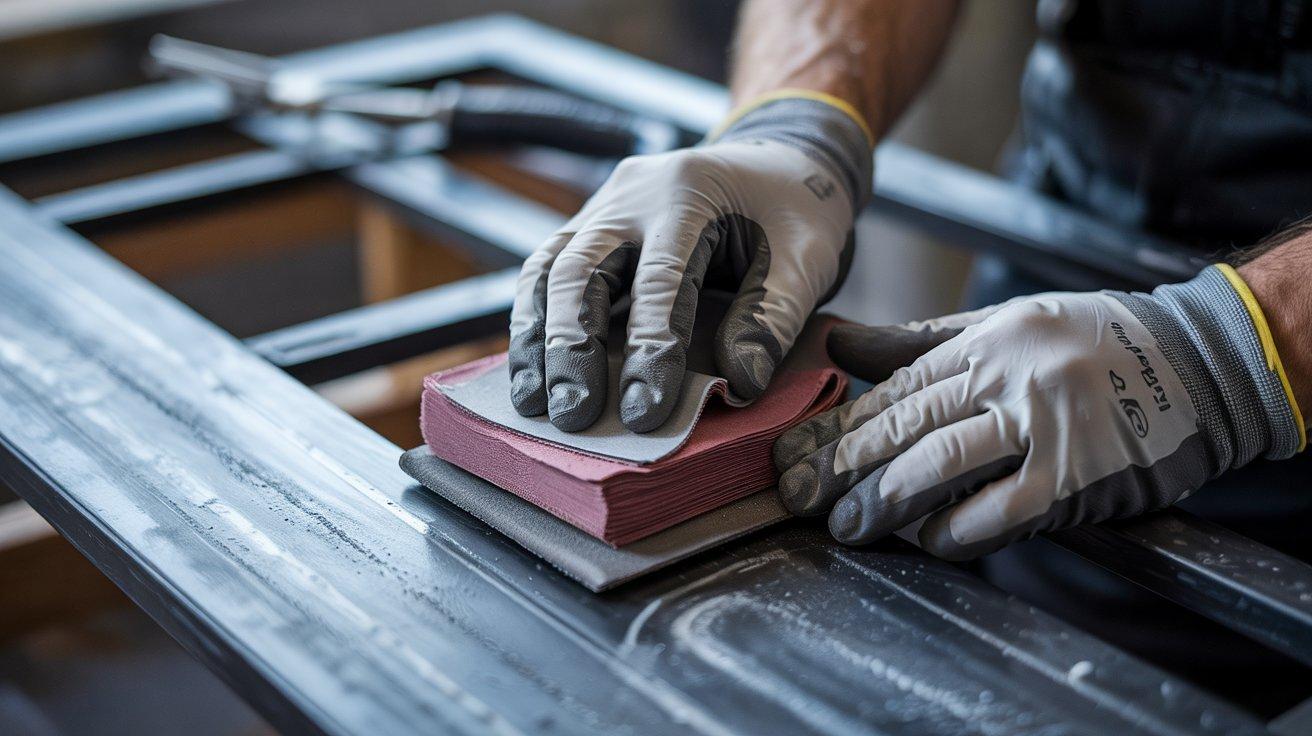
Even clean metal needs some texture for paint to grip well. Lightly sand glossy or smooth metal surfaces with fine-grit sandpaper. This creates tiny grooves that give the paint something to hold onto.
You don’t need to sand heavily – just enough to dull any shine. After sanding, wipe with a clean cloth to remove all dust. Any left-behind particles will show in your final finish.
3. Apply Metal Primer (if Needed)
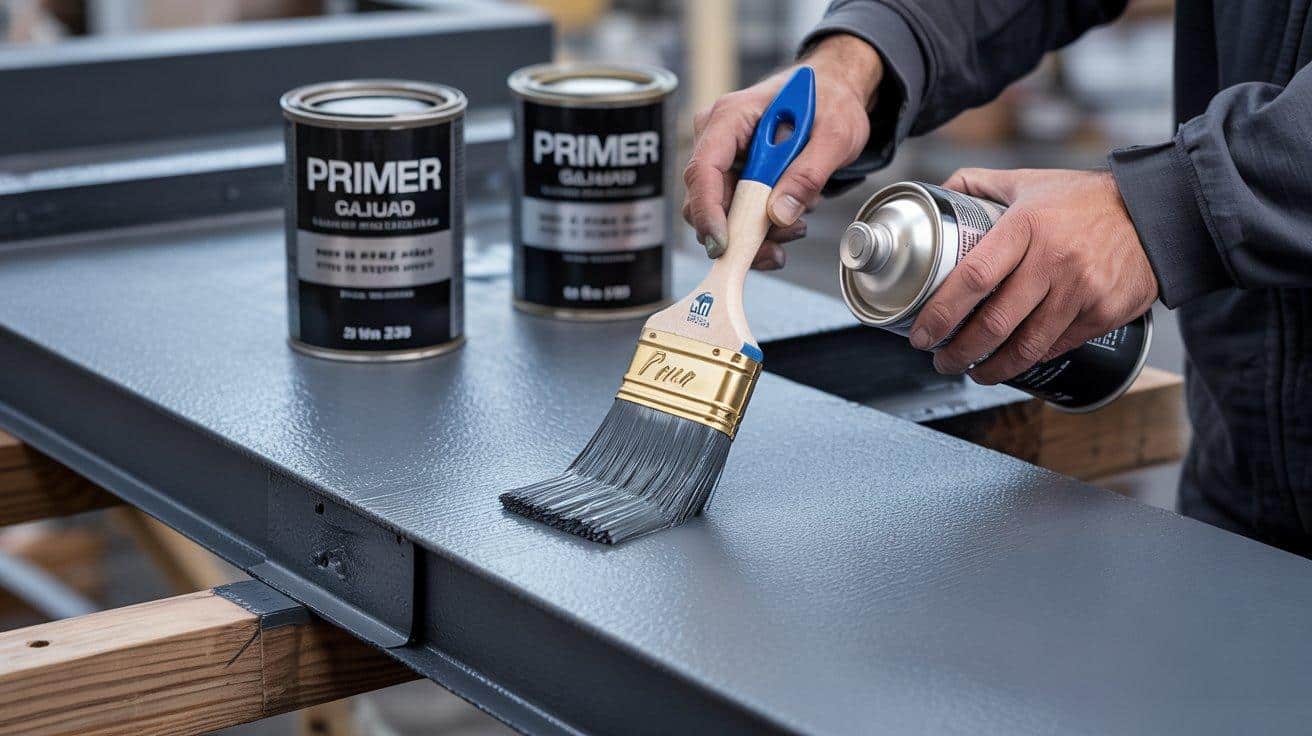
Many metals benefit from a primer before paint. Use a rust-inhibiting primer on bare ferrous metals to prevent corrosion. For aluminum or galvanized surfaces, look for primers specifically designed for these metals.
Apply primer in thin, even coats and let it dry for the time shown on the can label. Some primers may require light sanding between coats for optimal adhesion. A good primer coat often means you’ll need fewer paint coats.
4. Choose Your Tool
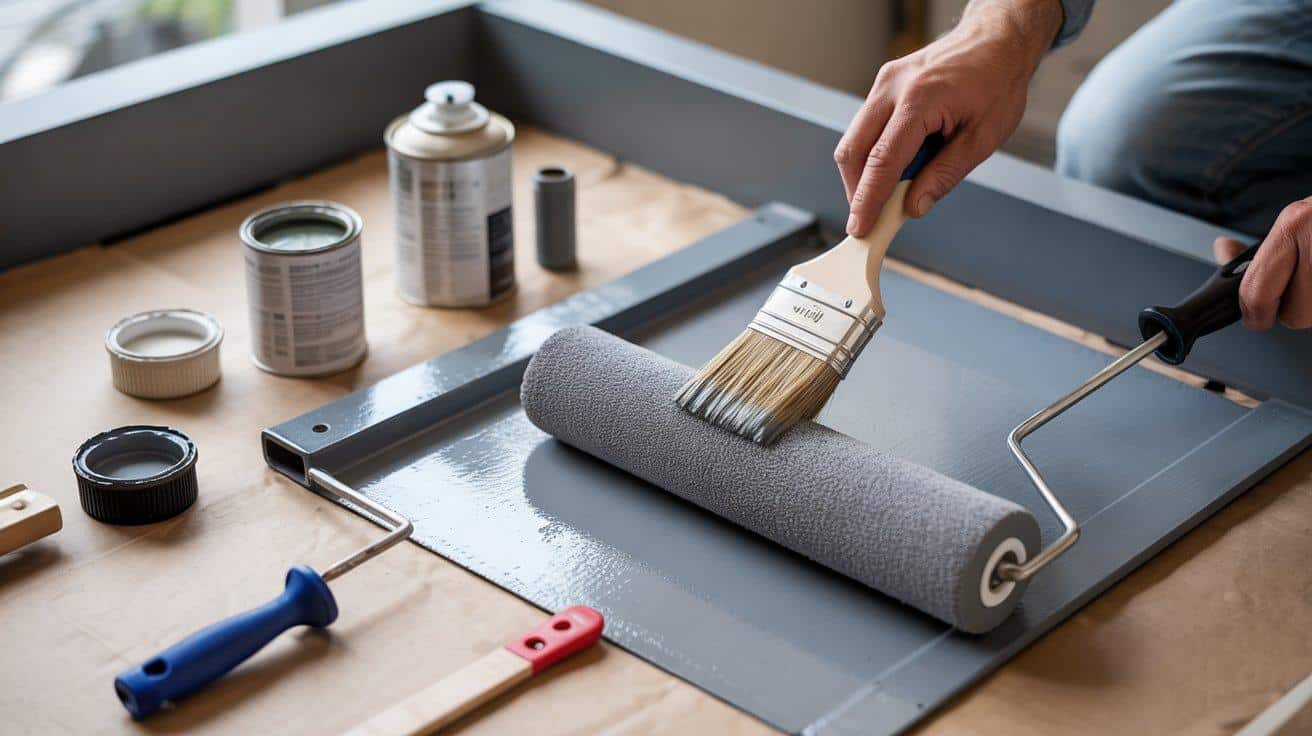
Select the right tool for your specific project. Brushes work well for small areas and getting into corners and details. Look for brushes with natural bristles for use with oil-based paints and synthetic bristles for use with water-based paints.
Rollers cover large, flat areas much faster than brushes and leave a smooth finish. Mini-rollers are perfect for metal furniture. Spray paint works wonders for odd shapes with lots of angles or items with many small parts, like chairs or railings.
5. Apply Paint in Thin Coats
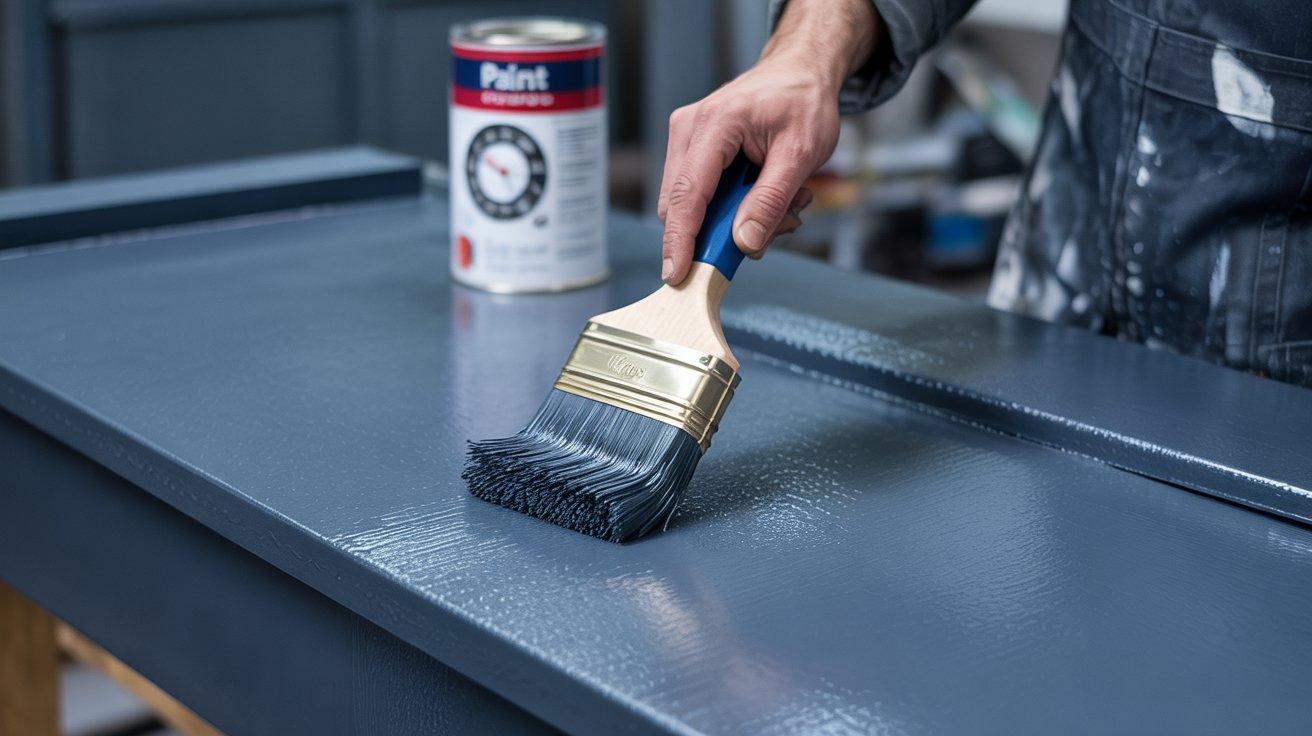
Patience pays off when painting metal. Apply paint in thin, even coats rather than trying to cover everything in one thick layer. Thin coats dry better and harder than thick ones, which may stay soft underneath.
Try to follow the grain or go in one direction for the smoothest finish. Wait the full time listed on the paint can before adding another coat. Rushing leads to bubbles and peeling.
6. Let Dry Fully
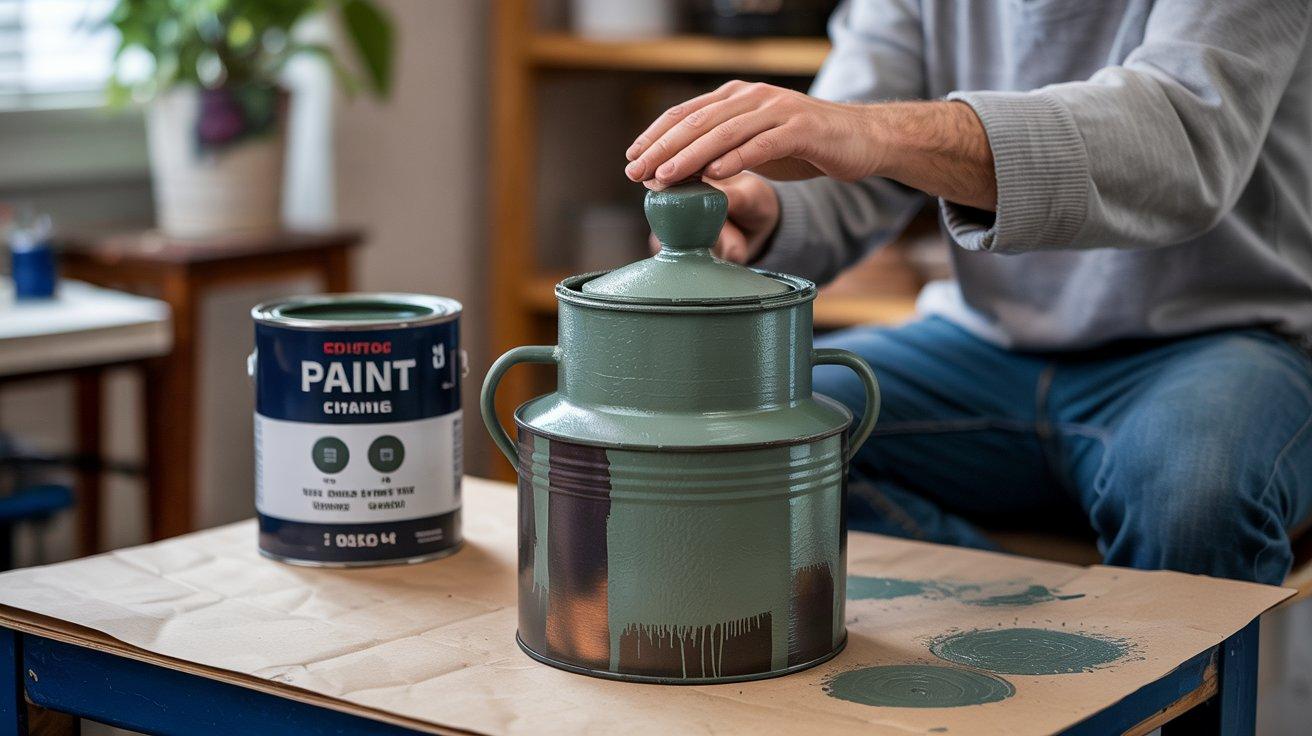
Drying and curing are distinct processes. Paint may feel dry to the touch within hours, but it takes much longer for the full hardness (curing) to occur. Check the can for both dry and cure times.
You can add another coat after the dry time, but don’t put items back into service until after full cure time has passed. This might be several days for some paints. Proper curing makes the paint more durable and less likely to scratch or chip.
7. Seal (optional)
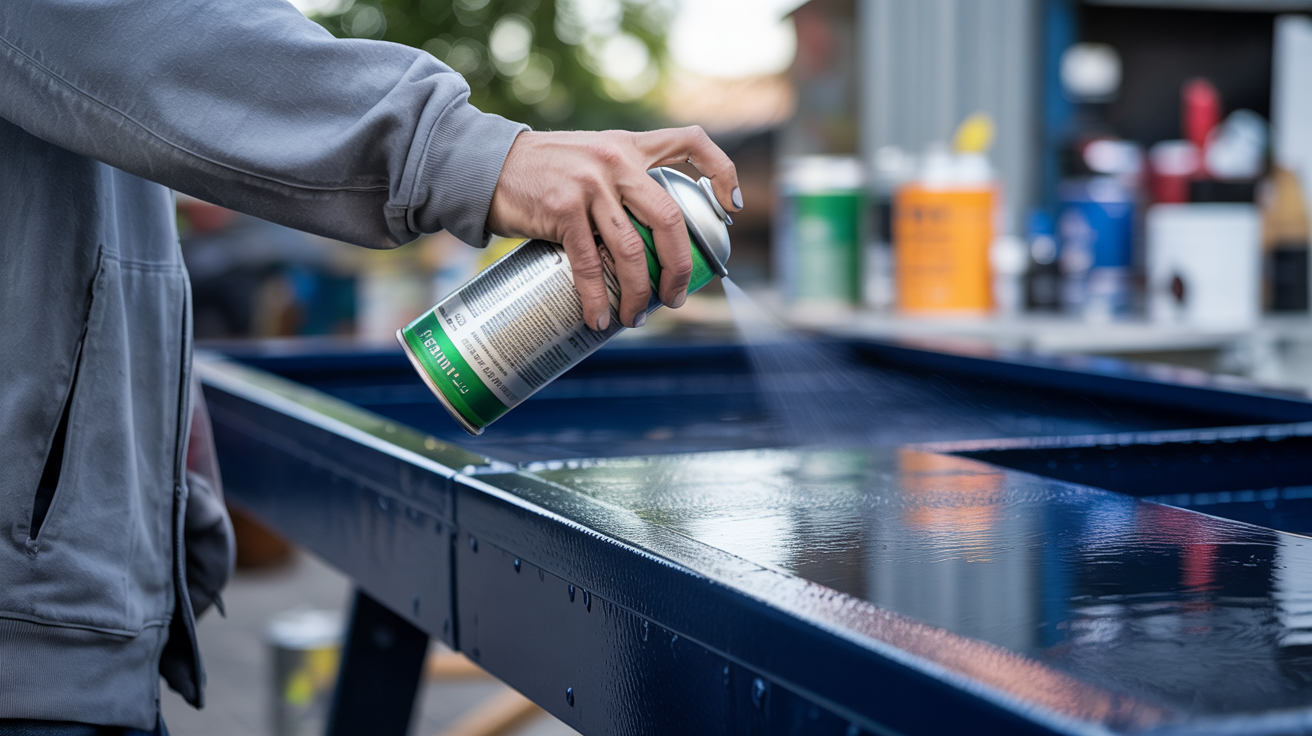
For extra protection, consider adding a clear coat sealer over your painted finish. This step works well for items that get heavy use or need frequent cleaning.
The clear coat provides an additional layer of protection against scratches and moisture. It can also make cleaning easier and help colors stay bright longer.
Select a sealer that is compatible with your paint type: water-based for water-based paints, and oil-based for oil-based paints.
Tips for Painting Indoor vs. Outdoor Metal
The location of your metal items significantly affects the type of paint that will work best for them. Indoor and outdoor environments create different challenges for paint.
Indoor Metal Items
-
Paint Options: Focus on aesthetics; more options are available for indoor items.
-
Low-Odor Paints: Opt for paints with low odor, as air circulation may be limited indoors.
-
Protection Against Dirt/Marks: Consider paints labeled as “washable” or “scrubbable” to prevent damage from frequent touch.
-
Water-Based Paint: Ideal for indoor metal, as it dries quickly and is easily cleaned with soap and water.
-
Finish Options: Semi-gloss and satin finishes work well for smooth, attractive indoor surfaces.
-
Durability: Water-based enamels offer durable finishes that can withstand daily wear and tear.
Outdoor Metal Items
-
Sun Protection: Select UV-resistant paints to safeguard the metal from fading and deterioration caused by sun exposure.
-
Moisture Barriers: Ensure the paint seals out moisture to prevent rusting from rain, snow, or dew.
-
Regular Maintenance: Plan to recoat outdoor metal every few years to maintain the finish and prevent peeling.
-
Oil-Based Paints: Opt for oil-based or specialty outdoor paints for their toughness and flexibility in adapting to temperature changes.
-
Durability: Oil-based paints create a more durable film that resists cracking, ideal for harsh outdoor environments.
These tips will help ensure your metal items are properly painted and protected for both indoor and outdoor use.
Conclusion
Choosing the best paint for metal depends on the item’s location and the type of metal it is made of. For outdoor projects, oil-based or specialty paints from Rust-Oleum or Hammerite provide the necessary protection.
For indoor items, acrylic or enamel paints give a nice finish with less fuss. Proper steps matter more than brand choice.
Good cleaning, priming when needed, and applying thin coats create a finish that lasts. Taking the time for thorough prep work pays off with results that stay looking fresh for years.
Try one of the top paint brands we’ve listed for your next metal project. The quality of metal-specific paint is evident in both its ease of use and durability.
Your painted items will keep their good looks through years of use, saving you time and money.
Frequently Asked Questions
Will Acrylic Paint Stay on Metal?
Yes, acrylic paint can stay on metal if the surface is properly cleaned, sanded, and primed. Using paint specifically designed for metal and applying a clear topcoat can help ensure a durable finish.
What Kind of Paint Is Permanent on Metal?
Oil-based, epoxy, and enamel paints are the most permanent for metal. Oil-based paints are durable, epoxy paints resist wear and moisture, and enamel paints offer a hard, glossy finish. Proper surface prep is essential for lasting results.
How to Paint Exterior Metal?
To paint exterior metal, clean and sand the surface, apply a rust-inhibiting primer, and then use outdoor metal paint, such as oil-based or enamel. Apply thin, even coats, and consider a clear topcoat for extra protection. Let it fully dry before use.

